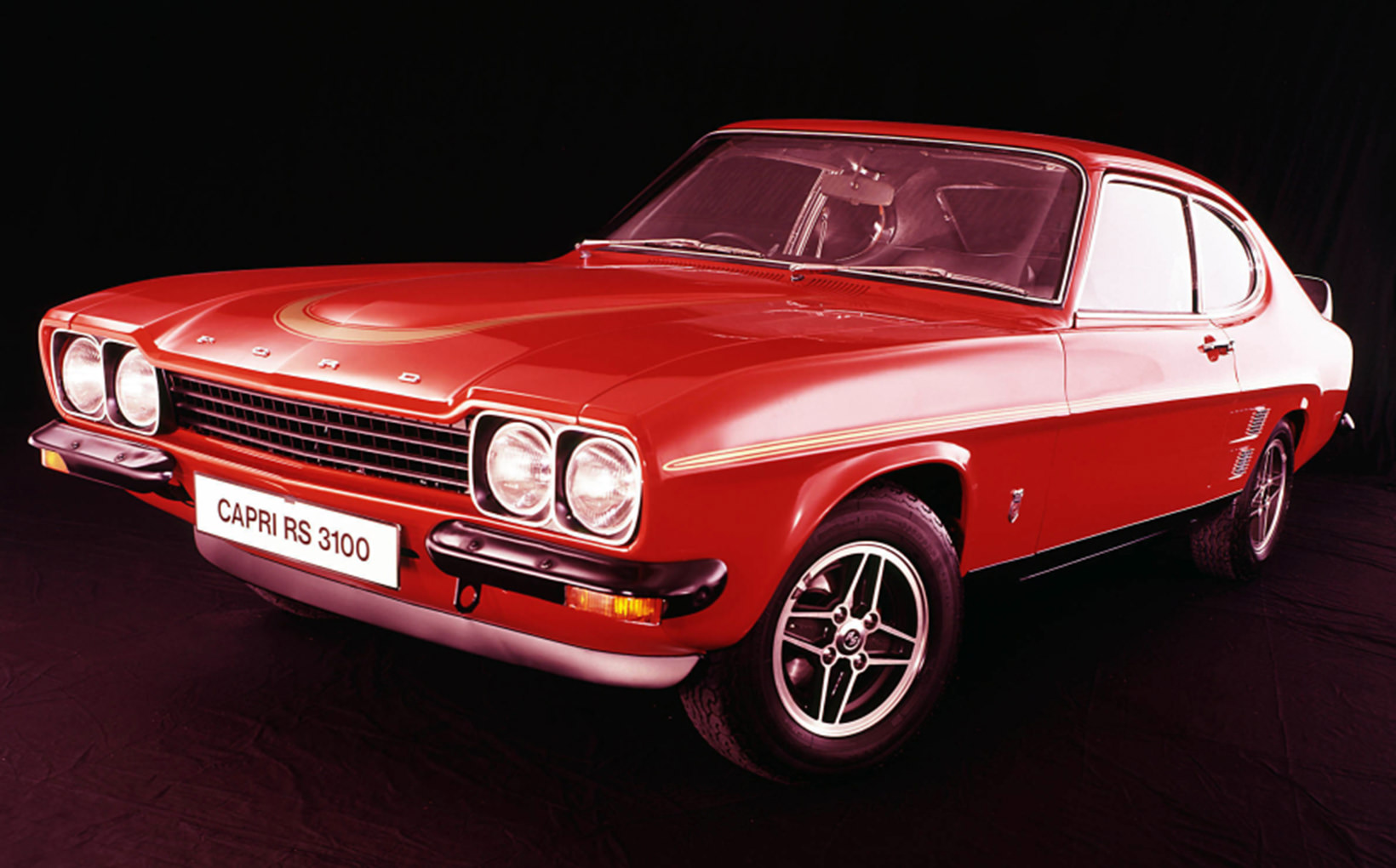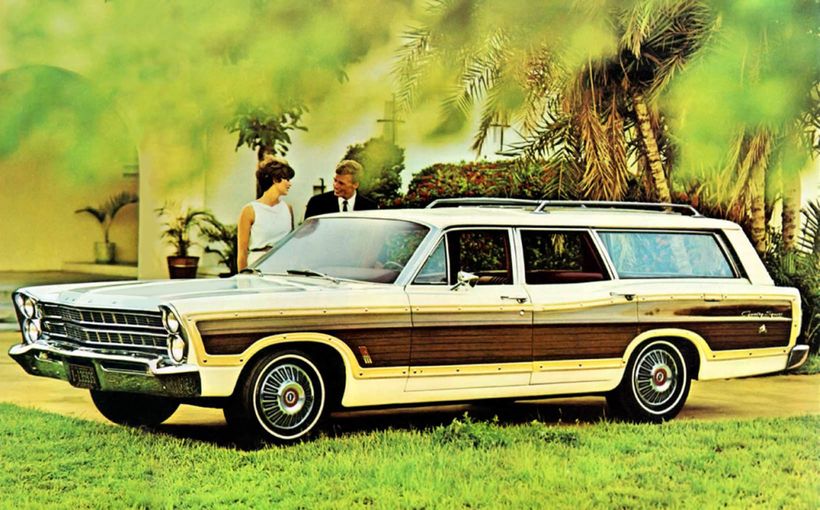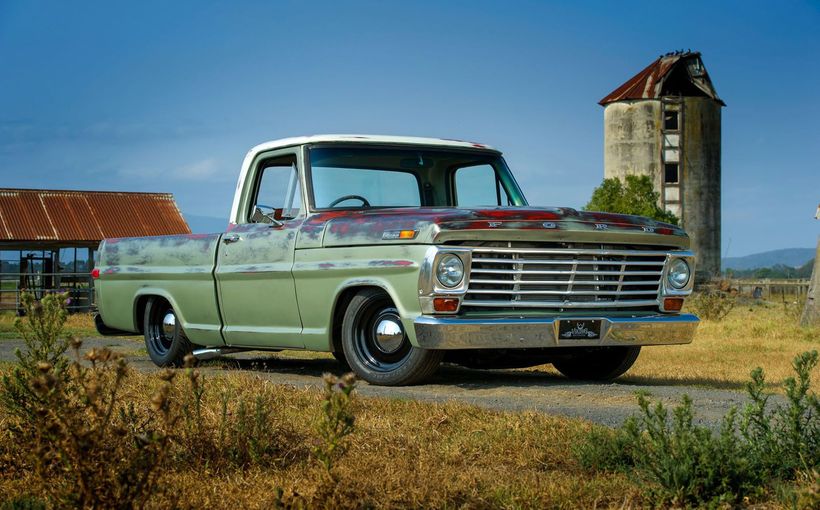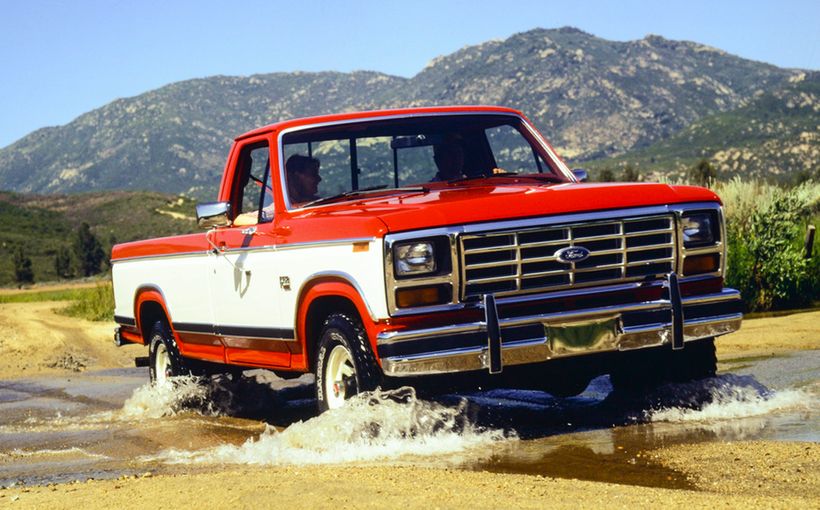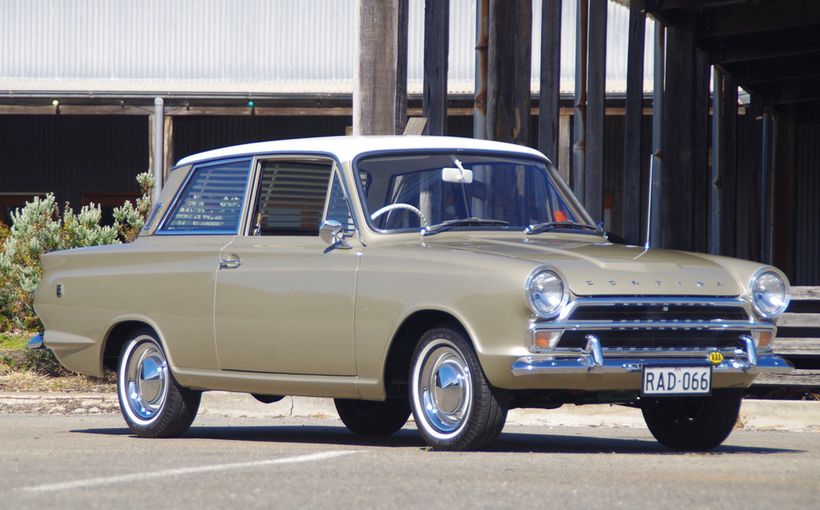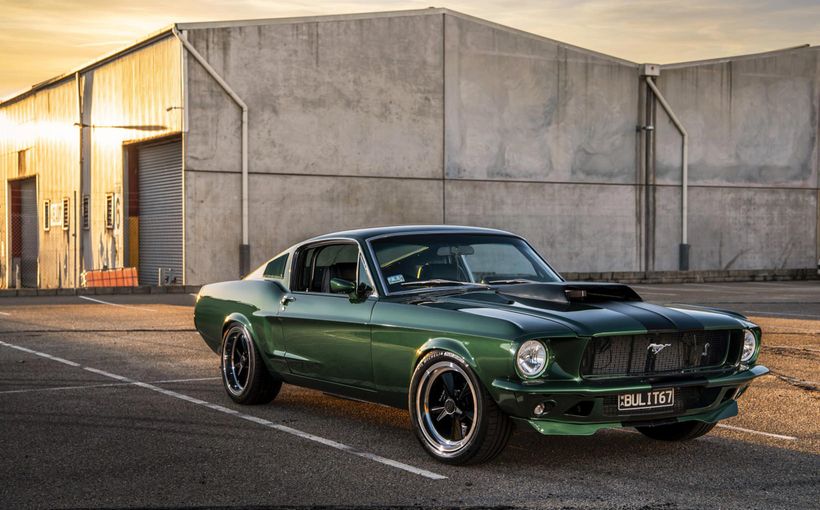Ford Capri: ‘the car you always promised yourself’

Seductive advertising themes of personal indulgence and emotional choice accompanied the arrival of the all-new Capri in 1969. Coming five years after the hugely successful launch of the Mustang, Ford adopted similar styling and marketing strategies for its sporty European equivalent which like the Mustang also proved to be a winner on road and track.
Given numerous similarities (the Capri was even codenamed ‘Colt’ during its development) it was immediately embraced by a rapturous public and motoring press as the ‘Mini Mustang’ or ‘European Mustang’.
After all, they were both products of the Ford Motor Company, both handsomely sporty two-door personal coupes with four adult seats and decent-sized boots and both utilised as many components as possible from existing models, to minimise development and ownership costs.
They also offered a variety of drivetrain, trim and equipment combinations to suit every budget and motoring need, with spirited performance in the most expensive models casting a halo of sportiness across the lower-priced ones. That performance breeding also ensured that both excelled in competition.
By contrast, the Capri was smaller than the Mustang, relied largely on Cortina mechanicals compared to the Mustang’s Falcon underpinnings and its largest engine was a V6 compared to the Mustang’s V8.
Essentially the Capri was a scaled-down version better suited to its primary UK and European markets. Even so, it found enthusiastic buyers in numerous export locations including the US, where it was sold through the Lincoln-Mercury division until 1978 when replaced by a homegrown version derived from the contemporary Mustang in 1979. The Capri was also sold in Australia, which will be examined in more detail in this review.
Not surprisingly, the sporty British coupe was popular with aftermarket tuning firms, several of which offered V8 conversions using Ford's light and compact Windsor 289/302cid small-block for which the spacious engine bay was ideally suited.
The best known of these was the potent Perana, developed by Johannesburg's Basil Green Motors in 1970 and sold by Ford of South Africa as a full-fledged showroom model until 1973, offering scintillating 140mph (225km/h) performance with a full factory warranty. Green's V8 Capris also dominated South African touring car racing.
During its 18 years in production, shared between Ford’s British and German plants, the Capri attracted almost two million buyers through three styling evolutions.

Image: Ford
Capri (1969-1974)
Although Colt was the obvious nameplate for a smaller Mustang, Mitsubishi held the global copyright to that name so Ford found an alternative (again) in Italy.
The naming of its mid-sized UK sedan launched in 1962 was inspired by the northern Italian ski resort of Cortina d’Ampezzo. So, given that the Capri drew similar inspiration from a sun-drenched Mediterranean island off the coast of Naples, it appeared Ford product planners had a fixation with Italian tourist destinations!
However, the company had already used the Capri name on a coupe version of its short-lived Consul Classic range released in 1961 and fortunately retained the copyright.
In early 1965, approval was given to commence styling proposals involving Ford’s US, British and German studios. An American concept was chosen and after positive responses from various consumer clinics, UK Ford management gave the £22 million project the green light in 1966. However, official approval by Henry Ford II was not granted until mid-1967, so the Brits must have been convinced that even ‘The Deuce’ would not reject a mini-Mustang!
Ford of Europe GmbH was also established that year with its headquarters, manufacturing plant and competition department based in Cologne, Germany. Although this vibrant facility would play a pivotal role in the Capri’s success, the design and development of the original was primarily a British project.

Image: Ford
“From an early stage, Ford had decided to use the Cortina floorpan. In fact it didn’t make it into production, though many magazines of the period were convinced that this Capri was simply a two-door Cortina,” wrote Jeremy Walton in his definitive Capri history.
“This was not surprising as the wheelbase was practically identical at 100.5 inches (Mk1 Cortina) and 100.8 inches (2560mm) for the first Capri. However, I was told, and accept, that the production floorpan for Capri was substantially different to Cortina in respect of the suspension mounting points, the fitment of the axle location rods, this especially at the rear end where a low ride height was demanded to go with that road-hugging look.”
The Capri also had a wider track and was longer and lower. Kerb weights ranged from just 940kg in four-cylinder trim to 1080kg in premium V6 specification.
Some late changes were made to the original US styling proposal, particularly enlarging the rear side windows after consumer clinics revealed the thick roof pillars created a claustrophobic feel for rear passengers which could have cost many sales.
The chassis design adhered to simple and proven British Ford convention; front MacPherson struts with control arms and an anti-sway bar, while the rear was a live axle with semi-elliptic leaf springs and upper trailing arms. All model grades were equipped with rack and pinion steering and front disc/rear drum brakes.

Image: Ford
The Capri went on sale in early 1969 and given that it was built in both British and German plants, to supply UK and European markets respectively, there were different drivetrains. The British cars were powered by Ford’s robust ‘Kent’ pushrod crossflow inline four shared with the Cortina and new-for-1968 Escort, available in 1300, 1300GT, 1600 and 1600GT (and later 'Pinto' SOHC 2000GT) specifications. The German cars used the German division’s V4 in 1300, 1500 and 1700cc capacities.
Both factories also produced premium V6-powered models, again with homegrown engines. The British 3000GT used the 2994cc ‘Essex’ 60-degree V6 shared with Ford’s Zodiac, while the Germans preferred their ‘Cologne’ V6 which although featuring a similar 60-degree V-angle was available in 2.0 litre, 2.3 litre and ultimately 2.6 litre displacements.
The V6 model, with its unique power bulge in the bonnet, required a stronger Zodiac four-speed gearbox plus beefed-up chassis rails, top strut mounts and suspension settings. The fuel capacity was also increased and there were larger rear brake drums. The Essex V6 engine was about 45kg heavier than the fours, resulting in a 57/43 weight distribution with inherent but not excessive understeer.
Ford made some running changes towards the end of Mk1 V6 production, resulting in more power and greater engine refinement, along with revised gearbox and diff ratios. The 3000GT was also replaced by the 3000GXL as the top-shelf model, easily distinguished by four headlights.
Annual combined production of the British and German plants averaged a healthy 213,000 units in meeting huge demand between 1969 and 1974, with close to 1.3 million Capris manufactured.

Image: Ford
The Australian connection
Like the Cortina and Escort, the Capri was also sold in Australia, although its showroom life was relatively brief. Local assembly from British CKD kits commenced in May 1969 starting with two four-cylinder models, before being joined by the V6 variant in February 1970.
Entry-level was the Deluxe which for $2737 (roughly $33,700 today) offered a sporty image with bucket seats and a four-speed manual floor-shift, but with modest performance from the standard 78bhp (58kW) 1600 four with basic instrumentation and trim.
The premium variant was the 1600GT (later renamed XL due to punitive insurance premiums for anything displaying a GT badge) which for a snip over $3000 ($37,000 today) bought full instrumentation, body stripes and higher-grade trim plus a more powerful 93bhp (69kW) engine tune with two-barrel Weber carburettor. Matched with a stronger close-ratio four-speed gearbox, the Capri 1600GT could nudge 160km/h with a standing quarter under 19 seconds.
The Capri, like the Mustang, offered numerous options which allowed customers to personalise their cars, including sports steering wheel, racing-style door mirrors, driving lights, laminated windscreen, radio, radial tyres, three-speed automatic transmission, sports wheels and more.
However, given the Capri’s relatively high base-pricing, if a Deluxe or GT buyer got carried away they could easily find themselves owning a four-cylinder Capri with a purchase price similar to that of a much larger Falcon, Holden or Valiant six-cylinder sedan.

Image: Ford
Local assembly of the premium 3000GT (aka GT V6) commenced in early 1970, sharing a similar trim level and instrumentation to the 1600GT and extensive options list, although the racing-style door mirrors were standard and the three-speed automatic transmission was not available.
The 3.0 litre Essex V6, equipped with a 40DFA twin-choke Weber carburettor, was rated at 128bhp net (95kW) and 173 ft/lbs (235Nm). However, Australia was quoting SAE gross figures at the time, which showed higher 144bhp (107kW) and 192 ft/lbs (260 Nm) outputs.
Maximum speed climbed to 115mph (185km/h), 0-100km/h in 9.3 secs and high 16s for the standing 400 metres, which compared well with Holden’s recently released 161cid (2.6 litre) LC Torana GTR with 169km/h top speed, 0-100km/h in 10.8 secs and 17.4 secs for the standing quarter. Road testers praised the V6 Capri’s effortless touring ability and safe, predictable handling with oversteer easily introduced thanks partly to its ample torque.
Although the Capri V6 was an enticing package, with strong performance and sporty appeal, its CKD assembly process only comprised about 40 per cent local content, which meant the majority of its components attracted hefty import tariffs.
As a result, its base price when launched in 1970 was a steep $3280, compared to the GTR which was a relative bargain at $2778 (or about $6000 cheaper in today’s money). The Capri V6’s price had soared another $600 by 1972 when it was cancelled due to shrinking sales. The four-cylinder models, which also struggled to maintain competitive pricing due to similar local content tariff pressures, were also dropped.
Australian Capri sales between 1969 and 1972 only totalled 10,696 units, with an annual peak of 4,120 in 1970 when the V6 model was added to the line-up.

Image: Ford
The fabulous RS Capris
While Ford UK concentrated on the Escort’s global race and rally program through its competitions department at Boreham in Essex, Ford of Europe was focused on the Capri with victory in the prestigious European Touring Car Championship its primary goal.
The Capri’s release early in 1969 prompted immediate activity in race and rally events with the German 2300GT variant. However, as the level of ETCC competition between Ford and arch rival BMW increased, Ford committed considerable resources to produce a road-legal Rallye Sport (RS) version of the car it wanted to race in a minimum volume of 1000 units per year.
This was to comply with rules that demanded a tangible showroom link to gain approval (aka homologation) for competition use. So, these ‘homologation specials’ provided the starting point for the race cars, which were allowed considerable freedoms under the FIA’s Group 2 rules.
The first of these was the RS2600. Released in 1970, the key objectives were to get approval for a low 900kg minimum weight and a longer stroke (2673cc) version of the Cologne V6 for racing.
The first 50 examples (minimum number required for homologation inspection) were genuine lightweights with Minilite magnesium wheels, no bumpers, fibreglass bonnets, doors and boot-lids, no heaters or carpets, thin windscreen glass and even sliding perspex side windows. They achieved their primary objectives, even though they clearly didn’t meet Ford’s usual quality control standards and were barely legal for German road use!
Fortunately, the remaining steel-bodied RS2600 production run of around 4000 units did meet those requirements and despite being heavier (around 1080kg) they were still very agile and fast road cars which generated healthy buyer demand.
The 2637cc Cologne V6, equipped with Kugelfischer mechanical fuel injection similar to the race engine, was rated at 150bhp DIN (111kW) and capable of 0-100km/h in 8.6 seconds and 124mph (198 km/h).

Image: https://en.wheelsage.org/
When modified to full-house Group 2 rules, in its definitive 1973 specification with Weslake aluminium heads, mechanical fuel injection and bored-out to its 2995cc structural limit, a works RS2600 had more than 320bhp. There was also a featherweight magnesium bellhousing, multi-plate clutch, ZF five-speed competition gearbox and a live rear axle located by four trailing arms and a Watts linkage. The strut-type front and multi-link rear suspensions were rose-jointed and fully adjustable.
Big ventilated disc brakes at each corner sat inside enormous BBS wheels and tyres, the latter measuring 11 inches wide at the front and 13 inches at the rear, shrouded by fiberglass wheel arch extensions and a large front spoiler. Weight distribution was optimised with the engine’s dry sump oil tank and ancillaries mounted in the boot. 0-100km/h took only 4.6 seconds with top speeds of 170mph (270km/h).
The works RS2600s dominated the 1971 and 1972 ETCC seasons against factory-supported BMW teams, winning 13 of 16 championship races including consecutives Spa 24 Hour outright victories, plus a class win at the Le Mans 24 Hour and many other successes.
One of these works-prepared cars did appear in Australian competition when veteran racer/journalist David McKay and navigator Garry Connelly competed in the 1972 Dulux Rally. The unusual 10-day 4,000km event, inspired by the Tour de France, featured competitive stages on bitumen and dirt. The Cologne Capri, with its limited suspension travel and belly-scraping ride height, suffered on the dirt stages but excelled on bitumen, finishing seventh overall and attracting the lion’s share of attention from media and spectators.
BMW caught Ford by surprise in 1973, with full factory participation and a surprise mid-season homologation which armed its 3.0 CSL coupe with a huge boot-mounted wing and other wind tunnel-developed appendages which soon earned its infamous ‘Batmobile’ nickname. The substantial increase in downforce gave BMW the unfair advantage it needed to end Ford’s winning streak that year.
Ford responded with its second road-legal homologation special called the RS3100 for 1974. Essentially an evolution of the RS2600, it was built primarily to gain approval to use a larger 3.1 litre (3091cc) version of the Essex V6 - which under Group 2 could be stretched to 3.5 litres to match the CSL’s enlarged inline six - and a large ‘ducktail’ rear spoiler to counter BMW’s downforce advantage.
Built in a batch of 250 (the new minimum number required for homologation) the British-built RS3100 went on sale in November 1973 with homologation approved on January 1, 1974. Surprisingly perhaps, these rare cars proved hard to sell, not helped by the new Capri II model being launched in Europe at the same time. A batch of around 50 (some say less) RS3100s were shipped to Australia as late as June 1974 and eventually sold through selected Ford dealers. Today, they are highly prized by collectors.

Image: Ford
Racing rule changes requiring all-steel panels and higher minimum weights for 1974 meant the RS3100 was a more civilised road car than the stripped-out early production RS2600s. The carby-fed 3.1 litre V6 provided no increase in power at 148bhp net (109kW) with similar acceleration and top speed, but it had sports suspension tuning with Bilstein shocks and other refinements which made it a rewarding driver’s car.
The Group 2 racing version’s dry-sump Essex V6 block, now bored to 3412cc, benefitted from 1974 engine freedoms which allowed all-new Cosworth aluminium cylinder heads with belt-driven dual overhead camshafts and four valves per cylinder, fed by Lucas or Kugelfischer mechanical fuel injection. This combination was good for 415bhp (308kW) at the start of the season and grew to 455bhp (338kW) at a screaming 8500rpm by the end of it.
The engine’s radiators were installed in the bodywork just ahead of the rear wheels to enhance weight distribution. The aerodynamics were even more aggressive, with a huge front spoiler and side skirts added to balance the unprecedented rear downforce created by the new boot spoiler. Tyre widths had also expanded to 12 inches at the front and a staggering 16 inches at the rear.
The RS3100 was a sophisticated and extremely fast racing sedan that was more than a match for its big-winged BMW rival, capable of 0-100km/h in 4.1 secs, 0-200km/h in just 13 secs and a stunning top speed of 186mph (300km/h).
Unfortunately, the timing could not have been worse for what promised to be the battle of all battles for the ETCC crown in 1974. The world’s worsening energy crisis, which had been triggered by the Arab-Israel war in 1973, forced Ford and BMW to drastically downscale their ETCC appearances. Ford’s Cologne competitions department was closed at the end of the year and with that any plans to develop a Capri II-based Group 2 successor.
It was a sad end to a glorious racing era for the Capri, but it did at least allow Allan Moffat to get his hands on one of the ex-works Group 2 RS3100s which he raced in Australia’s sports sedan category during the 1975 and 1976 seasons. It won numerous races against more powerful V8 competition and played a pivotal role in Moffat winning the inaugural Australian Sports Sedan Championship in 1976.

Image: https://en.wheelsage.org/
Aussie racing Capris
The arrival of Moffat’s exotic European racer in 1975 was timely, given that his former Ford factory teammate Barry Seton proved that the Capri V6 could also be a winner in Australian touring car racing that year.
Until then it had been overlooked, largely due to rules that emanated from the annual Bathurst 500 endurance race that grouped cars into classes based on retail value. The Capri’s high pricing ensured it would have been uncompetitive against cars competing for outright honours, including Holden’s stove-hot Torana GTR XU-1 which was also cheaper.
However, Production Touring (Group C) rules introduced in 1973 brought new class structures based purely on engine capacity, which included an under-3.0 litre division ideally suited to the 2994cc Capri V6. And in 1975, the Australian Racing Drivers Club announced a new under-3.0 litre touring car series at its Amaroo Park circuit in Sydney to showcase the category's strengths in marque diversity and competitor numbers.

Image: https://autopics.com.au/
It was these two developments which prompted Seton to enter a Capri V6, which immediately proved to be more than a match for the previously dominant Mazda RX-3s. Seton won the 1975 ARDC series at a canter and started an avalanche of Capri rivals that ensured the sporty Ford coupe would be a mainstay in the under-3.0 litre class until the demise of Group C in 1984.
This was helped by Ford switching its UK and European focus to more showroom-based Group 1 rules, which were similar to Australia’s touring car rules at the time and allowed the latest factory developments to have a flow-on benefit for local teams.
During that 1975-1984 period, the Capri II and Capri III appeared on local tracks and combined with the original Capri’s achievements accumulated an impressive trophy collection, highlighted by dominance of the ARDC series until its demise in 1981 and numerous Bathurst 1000 class victories.

Image: Ford
Capri II (1974-1978)
The second-generation was codenamed ‘Diana’ during its development, which acknowledged that the Capri had established a unique European identity no longer perceived as a mini-Mustang. It was also the only one of the three Capri evolutions to officially include a ‘mark’ number in its model designation.
At launch in February 1974, Ford claimed it had invested 2.2 million man-hours and 300,000km of road testing across the UK and Europe in developing the new model, which also incorporated more than 2000 new or enhanced components.
The Capri II was built on the same 2560mm wheelbase and shared the same front track as its predecessor, but the rear track was increased and the body was slightly longer, wider and taller. There were also bigger brakes, offset by a 66kg increase in kerb weight.

Image: https://en.wheelsage.org/
The fresh exterior styling had a substantial increase in glass area, largely due to the addition of a hatchback. This new lid, with its gas struts, large window and extra body strengthening needed to support it, was the main contributor to the Capri II’s weight increase. However, addressing customer criticisms of limited luggage space and rear-quarter blind spots in its predecessor were considered top priorities in enhancing the Capri’s practicality and broadening its appeal.
At launch there were eight models, with a choice of 1300, 1600, 2000 and 3000cc engine capacities and numerous trim grades including the new premium Ghia 2.0 litre and 3.0 litre versions. The British-built V6 models continued to use the Essex engine while the Germans stuck with their Cologne version. Initially the sportiest UK Capri II was the 3000GT, which in 1976 was replaced by the 3000S with a well-appointed interior, uprated sports suspension and alloy wheels.
Given that the British and German plants were essentially manufacturing the same vehicle and Capri sales were softening, Ford moved all future Capri production to the German plant in 1976. That left the company’s UK factory at Halewood, Liverpool having reached a production total of 253,418 Capris and 84,073 Capri IIs.

Image: https://en.wheelsage.org/
Capri III (1978-1986)
The Capri II’s four years in production ended in 1978 when it was replaced by the third and final evolution of the breed, which used another female development codename, this time ‘Carla’.
The third-generation Capri was a more subtle styling revision than the Capri II. However, numerous cosmetic changes highlighted by a new louvred grille, quad headlights and reprofiled bonnet were effective in distinguishing it from the previous model, lowering its drag coefficient by 6.0 per cent and keeping the overall look remarkably fresh for eight years.
Initially, the premium performance model continued to be the 3000S, with similar mechanical specifications to the Capri II but with a slight increase in performance attributed to its superior aero, particularly when equipped with the S model’s front and rear spoilers which dropped the CoD to a best ever 0.374.

Image: https://en.wheelsage.org/
In 1981 the 3000S and its venerable British V6 were replaced by the 2.8 Injection. This model, which many enthusiasts rate as the finest road Capri of them all, was powered by a 150bhp (111kW) electronic fuel injected version of the 2792cc Cologne V6 shared with the contemporary Granada sedan, with a top speed of 205km/h and 0-100km/h in less than 8.0 secs.
“All of this translates into a car that goes with wonderful eagerness,” wrote Autocar magazine in 1981. “The engine has a delightful spread of power and with 66mph available in second and 92mph in third, there is always plenty of overtaking acceleration on tap particularly at the top end where the Essex would be struggling.
“At the limit of adhesion in balanced-throttle cornering the car has a pleasantly reassuring degree of understeer, with the driver always able to balance this with power at lower speeds or by backing off the throttle an any speed, the change to tail-out attitude being perhaps more easily provoked in this car than in other big-engined Capris we have driven. For rear-wheel drive addicts the ultimate handling is a delight since the car is so easily controlled at the limit, the front responding to steering and the rear to throttle action.”
However, by 1986, demand for Ford’s venerable European two-door coupe had reduced to the point that production was no longer sustainable. The Capri left an enviable legacy of success on both road and track that assured its status as one of Ford’s most successful and celebrated models.

